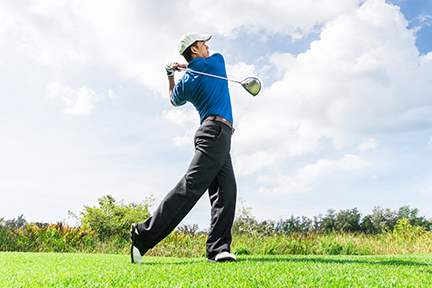For athletes and the parents of young athletes, the question from watching the movie about the NFL’s negligence on concussion danger may well be, Is this sport too dangerous for me/my son/daughter to play?
Medical drama sports thrillers aren’t normal Hollywood fare, but the topic of concussion problems in the NFL and its attempt to cover up medical evidence of known damage had the studios dropping “Concussion” on us Christmas Day. And I’m glad they did.
I’ve been studying concussions and devising evaluation and treatment plans for over 20 years, including when I was the director of sports medicine at Boston University. Currently, I head up Golden State Orthopedics & Spine’ (GSOS) Concussion Management Program that guides patients through concussion recovery and facilitates their progression back to activity.
Dr. Bennet Omalu is the forensic pathologist credited with discovering chronic traumatic encephalopathy (CTE) and linking it back to the cognitive and mental demise of several professional football players. In “Concussion” (and in real life) the NFL opposed his discovery and denigrated Dr. Omalu’s reputation as he raced to make his findings public. The NFL is one rung below FIFA on the ladder of most powerful sports organizations, and it is the bad guy in “Concussion.”
The movie is going to get lots of people thinking, including many parents of children who play football, hockey, soccer and other contact sports in which concussions are a danger. There has already been a change in sentiment about football’s violent contact, and “Concussion” will probably ramp that up even more.
Concussion safety is up to you
Again, I’m glad. Not that people may pull their boy from the football team or forbid their soccer-playing daughter from going up for headers, because that might be overreacting. But because it may get them to pay closer attention to the play on the field regarding how to prevent concussions and, more importantly, knowing when to look for signs of a concussion and when to pull that concussed player from competition.
Not surprisingly, athletes are often reluctant to admit that they got their bell rung and that they think it’s Monday on Saturday. The natural competitiveness that sports engender makes it likely that that player is going to say, “I’m good coach, put me back in.”
One of the most important things that parents, coaches and sports officials can do is to better understand the basics about concussions, common misunderstandings, potential effects and treatment options.
A concussion is a global brain dysfunction that occurs as a result of trauma to the head, most commonly affecting individuals who play contact sports, such as football, soccer or basketball. Concussions are a difficult sports injury to deal with because you can’t see or feel them like you would be able to in the case of a broken ankle or a contusion.
Today the standard procedure is that if an athlete is showing signs of a concussion, he or she should be removed from activity immediately until further evaluation. The consequences of leaving a concussed player in the game is that he or she could potentially fall or be hit again causing worsened symptoms and in rare situations death. A concussed athlete is extremely vulnerable to re-injury due to slowed reaction time and inability to focus.
A common misconception about spotting a concussion is that the athlete loses his or her consciousness, which can happen but is not always the case. I don’t expect parents or coaches to act as medical personnel and diagnose a concussion, but we do ask them to understand some of the common signs and symptoms including:
-
Headaches
-
Dizziness
-
Inability to focus
-
Fatigue
If individuals on the sidelines witness a hard hit or fall they should be aware of these symptoms, and if there are any suspicions, immediately pull the player out of the game until he or she can be evaluated further.
Treatment and return to play
One of the most important tools in evaluating a concussion is gauging a patient’s symptoms and symptoms progression. At GSOS we use a graded symptom checklist to evaluate symptoms and their severity. On subsequent visits, we check these symptoms again and compare them with the last visit in order to gauge whether or not they are improving.
By monitoring an athlete’s symptoms, we can decide when it is safe to begin a progression back to activity. Typically, we like to see patients without symptoms for at least a 24-48 hour period before they are cleared to begin to resume an activity. However, each case is different and if a patient has had prolonged, severe symptoms or has had previous concussions, he or she may need a longer symptom-free interval before progressing back to activities.
The important part of treatment for a concussion is both physical and cognitive rest. The concussed athlete should avoid any activities that may provoke or worsen the concussion symptoms. This may be difficult. For example, if a student-athlete suffers a concussion, he or she may need to stay home from school for a week or so, in addition to not practicing or exercising. It’s important that during this rest time the athlete monitor his or her symptoms for progressed or worsening symptoms.
It’s important to see a physician who is comfortable handling concussions in order to receive the proper care. For example, many times parents who are worried that their child has a concussion may immediately drive him or her to the hospital and order a CT scan, which is usually an unnecessarily expensive option. Imaging tests are usually only necessary when a patient’s symptoms worsen over time, which may indicate a more serious injury such as internal bleeding.
Still, a long way to go
Due to intense media scrutiny, many sports organizations are incorporating stricter programs to ensure the safety of players. For example, the U.S. Soccer Federation, the official governing body of the sport of soccer in the nation, recently issued a first-of-its-kind concussion guideline, called Recognize to Recover (R2R). R2R was created to help players, parents, and officials reduce head injuries in the sport, especially among youth players. Among other initiatives, one bars players age 10 or younger from heading the ball and limits their practice time.
Currently, all 50 U.S. states have legislation in place that dictates concussion management protocols. Although not all of the states employ the same guidelines, each state regulates concussion management to a degree. However, despite movement in the right direction, it is still your responsibility to monitor for signs of a concussion in order to prevent long-term effects.



